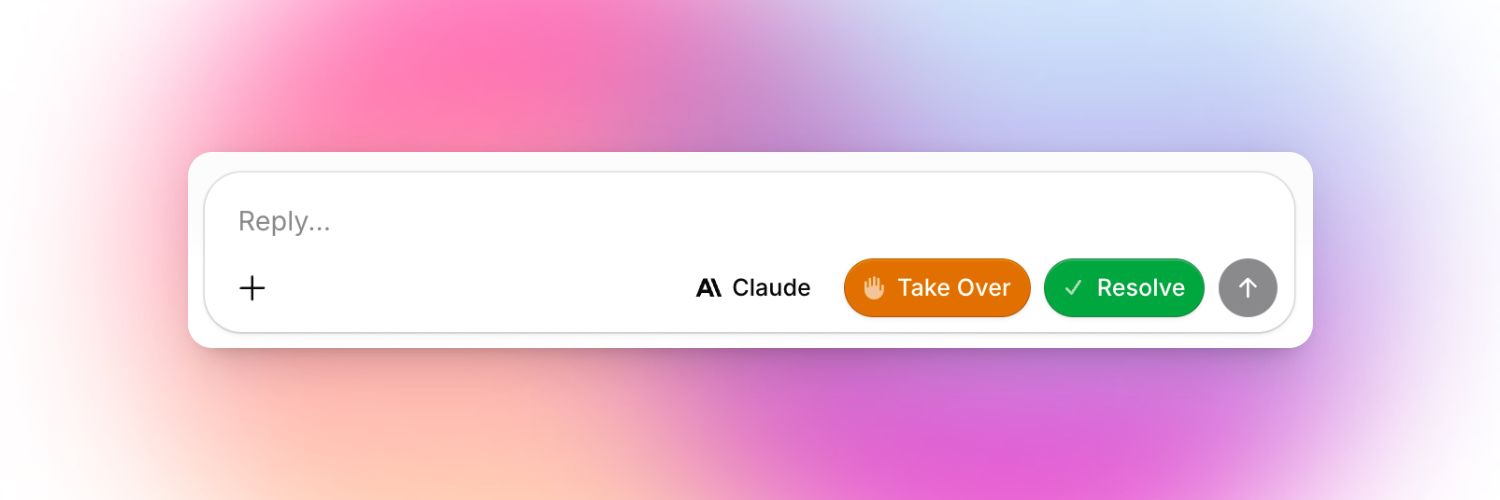TL;DR
- CX is being reshaped by conversational AI: it’s faster, more personalized, and always-on.
- 2025 data shows AI agents & chatbots are now table stakes for customer support.
- Proactive, contextual AI delivers seamless continuity, anticipating customer needs and personalizing at scale.
- Human-AI balance is crucial: the best brands use AI to empower agents, not replace them.
- The new competitive edge? Digital relationship hubs powered by intelligent conversations.
The Age of conversational engagement
When was the last time you waited on hold? In 2025, the answer for most customers is: “I don’t.” (Unless, of course, you’re calling the vet for an estimate.)
Welcome to an era where conversations, not tickets, drive customer experience.
Today, leading brands engage customers in real time, across channels, and build lasting loyalty. The game-changer? Conversational AI.
Why the future of CX is AI-driven
As keyword surge data from AnswerThePublic shows, searches in the US for terms like “conversational AI chatbot” and “AI assistant” are skyrocketing.
Customers and companies are actively searching for AI assistants and bots, not just basic FAQ bots, but solutions able to hold real conversations and resolve issues with context.
Why is adoption booming? Because the impact is tangible:
- Scalability that humans alone can’t match: AI assistants handle volume spikes, resolve simple issues instantly, and keep experiences consistent.
- Smarter with every conversation: Modern AI systems “learn” from every customer, improving with each interaction, turning static support into a living, evolving CX ecosystem.

This chat control bar allows users to draft responses, attach files, hand the conversation over to AI for automated handling, mark the issue as resolved, or send a reply.
The most-asked questions related to Conversational AI
What is conversational AI?
Conversational AI refers to artificial intelligence systems designed to interact with people using natural, human-like language. These systems, like chatbots, virtual agents, or voice assistants, can understand, process, and respond to user messages in real-time, enabling frictionless communication across platforms like websites, apps, messaging, and voice.
Who leads the space?
Market leaders in conversational AI (as of late 2025) include:
- OpenAI (ChatGPT, API integrations)
- Google (Dialogflow, Bard)
- Microsoft (Azure Bot Services, Copilot, and Nuance)
- Anthropic (Claude)
- IBM Watson Assistant
- Meta (Llama/chat-centric products)
- High-growth SaaS specialists and great for startups: Zendesk, Intercom, Invent, Ada, Drift, Kore.ai, LivePerson (for platform personalization/power).
How chatbots work?
Chatbots use algorithms and AI models to:
- Interpret user input (text, image or voice) using NLU (natural language understanding).
- Match the input to an intent (what the user wants).
- Generate a response, either scripted, dynamically generated by language models, or action-based (e.g., booking, support).
- Remember context (will depend on each platform) to keep conversations coherent.
- Some are rule-based (if/then flows, for FAQs), while others use advanced AI (like GPT-4 or similar) for natural, fluid dialogue.
Which chatbot is best?
“Best” depends on your specific needs. Choose AI chatbots that fit your scale, channels, pricing preferences, integration needs, and privacy requirements.
Which chatbot is free?
Some business tools (Invent, Ada, Intercom) offer free messages per month or free trials, but ongoing use is typically paid. Free versions available for ChatGPT, Claude and Gemini.
Which tools offer the best blend of power and usability?
For general/business use:
- ChatGPT/OpenAI: Intuitive, scalable, broad integrations, user-friendly API
- Intercom: Business automation + easy bot creation
- Google Dialogflow: Visual builder, voice & text support, good enterprise options
- Zendesk AI: Seamless with support stack, easy to deploy and escalate to agents.
- Invent: Tailored multi-modal and multi-model AI assistant and chatbots, strong memory & privacy options.
How AI empowers proactive, personalized service
Proactive, context-aware AI is at the heart of next-gen customer service.
✧ Remembers customer facts & preferences
Example: “Prefers Email notifications”, “The appointment is always for 2 people”
✧ Personalizes recommendations & solutions
Example: Suggesting renewal options based on real purchase history.
✧ Proactively spots & solves issues
Example: Detecting recurring app crashes and triggering solutions before users reach out.
✧ Seamless human handoff with rich context
Benefit: Customers never have to repeat themselves; agents are instantly up to speed.
The Human-AI balance in customer experience
AI excels at the routine, repetitive, or high-volume. But humans are essential for:
- Complex problem-solving
- Empathy-driven conversations
- Strategic upselling or relationship management
Tip: Think of AI as the “front desk” for speed and consistency, while human agents deliver bespoke “VIP” experiences.

This message bar allows users to compose a reply or manage the chat. Users can switch from the Claude AI assistant to manual mode with "Take Over," mark the conversation as resolved, or send their response.
From chatbots to digital relationship hubs
We’ve moved far beyond bots that just answer FAQ. The next frontier:
✧ AI assistants become “digital concierges” managing the entire customer journey
✧ Unified experiences across web, apps, and messaging, pick up where you left off, anywhere
✧ Empowered agents get instant summaries, predicted next steps, and real-time insights
Brands ignoring conversational AI risk falling far behind.
Those deploying robust AI are seeing faster resolution times, less frustration, and higher satisfaction, from both customers and agents.
Ready to step into the future of CX?
Explore Invent’s AI assistants and see how conversational memory creates the next level of customer relationships.

